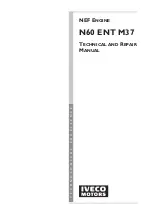
5.
Piping Design, Treatment and Installation
This chapter provides general guidelines for the design, construction and installation of piping
systems, however, not excluding other solutions of at least equal standard.
Fuel, lubricating oil, fresh water and compressed air piping is usually made in seamless carbon
steel (DIN 2448) and seamless precision tubes in carbon or stainless steel (DIN 2391), exhaust
gas piping in welded pipes of corten or carbon steel (DIN 2458). Pipes on the freshwater side
of the cooling water system must not be galvanized. Sea-water piping should be made in hot
dip galvanised steel, aluminium brass, cunifer or with rubber lined pipes.
Attention must be paid to fire risk aspects. Fuel supply and return lines shall be designed so
that they can be fitted without tension. Flexible hoses must have an approval from the
classification society. If flexible hoses are used in the compressed air system, a purge valve
shall be fitted in front of the hose(s).
The following aspects shall be taken into consideration:
●
Pockets shall be avoided. When not possible, drain plugs and air vents shall be installed
●
Leak fuel drain pipes shall have continuous slope
●
Vent pipes shall be continuously rising
●
Flanged connections shall be used, cutting ring joints for precision tubes
Maintenance access and dismounting space of valves, coolers and other devices shall be
taken into consideration. Flange connections and other joints shall be located so that
dismounting of the equipment can be made with reasonable effort.
5.1
Pipe dimensions
When selecting the pipe dimensions, take into account:
●
The pipe material and its resistance to corrosion/erosion.
●
Allowed pressure loss in the circuit vs delivery head of the pump.
●
Required net positive suction head (NPSH) for pumps (suction lines).
●
In small pipe sizes the max acceptable velocity is usually somewhat lower than in large
pipes of equal length.
●
The flow velocity should not be below 1 m/s in sea water piping due to increased risk of
fouling and pitting.
●
In open circuits the velocity in the suction pipe is typically about 2/3 of the velocity in the
delivery pipe.
Recommended maximum fluid velocities on the delivery side of pumps are given as guidance
in table 5-1.
Table 5-1
Recommended maximum velocities on pump delivery side for guidance
Max velocity [m/s]
Pipe material
Piping
1.0
Black steel
Fuel piping (MDF and HFO)
1.5
Black steel
Lubricating oil piping
2.5
Black steel
Fresh water piping
Wärtsilä 26 Product Guide - a9 - 7 September 2016
5-1
5. Piping Design, Treatment and Installation
Wärtsilä 26 Product Guide
Summary of Contents for WARTSILA 26
Page 1: ...W RTSIL 26 PRODUCT GUIDE...
Page 12: ...This page intentionally left blank...
Page 34: ...This page intentionally left blank...
Page 50: ...This page intentionally left blank...
Page 92: ...This page intentionally left blank...
Page 114: ...This page intentionally left blank...
Page 148: ...This page intentionally left blank...
Page 160: ...This page intentionally left blank...
Page 172: ...This page intentionally left blank...
Page 182: ...This page intentionally left blank...
Page 188: ...This page intentionally left blank...
Page 190: ...This page intentionally left blank...
Page 193: ......
Page 194: ......
Page 195: ......
















































